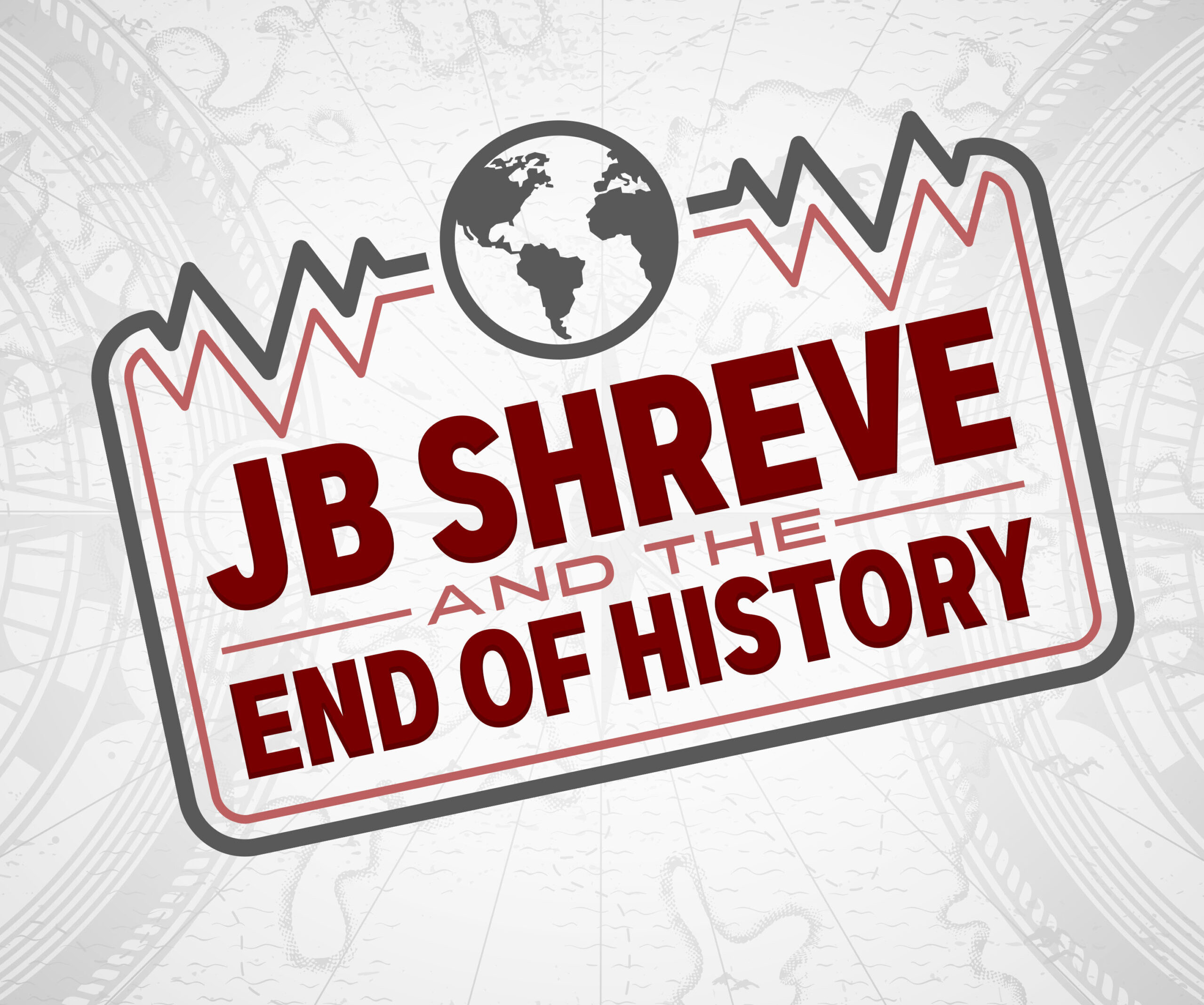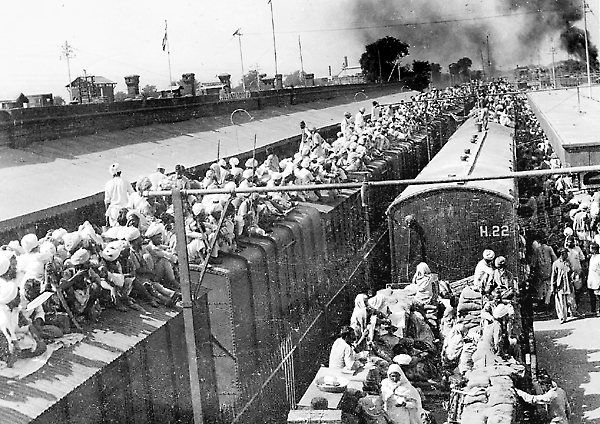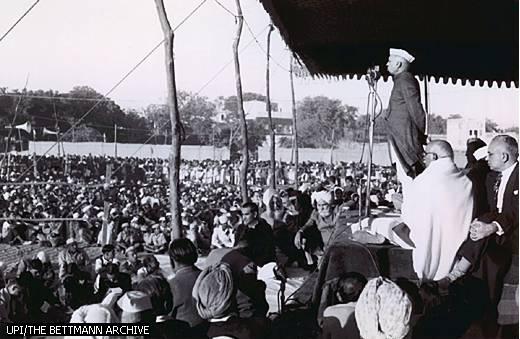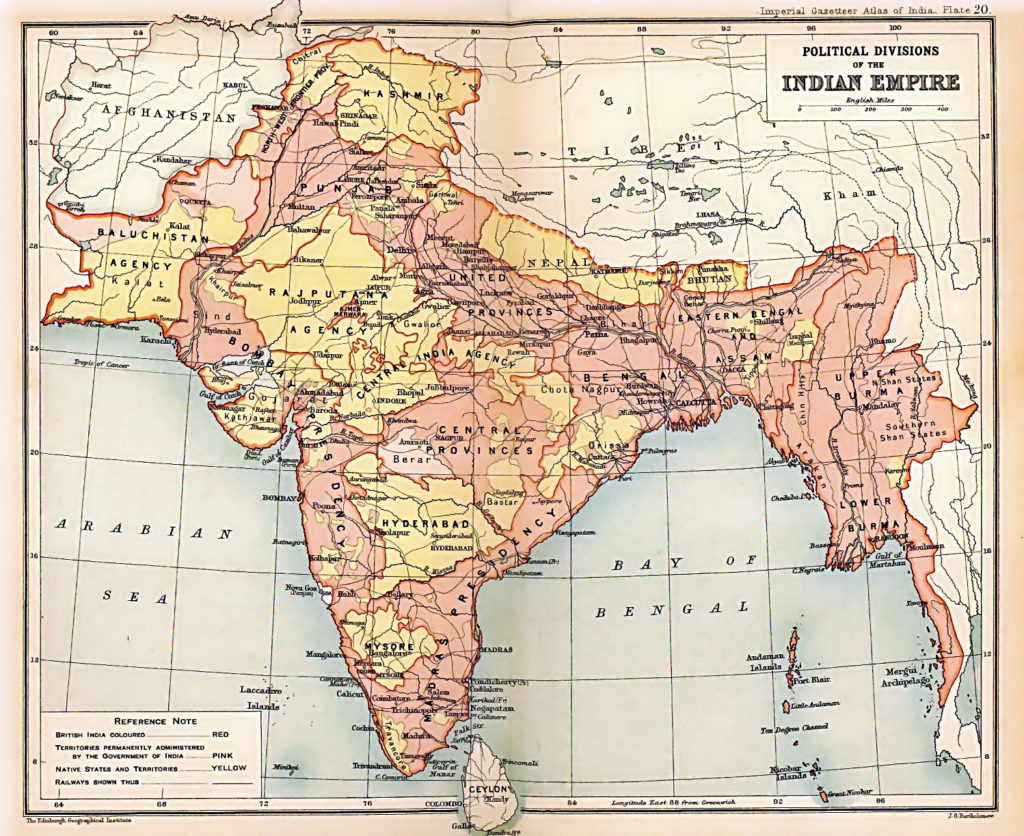
Seventy-four years ago this week, India and Pakistan each declared their independence and partitioned the subcontinent into the newly defined nations of India and Pakistan. The immediate results included the massive flight of Hindus and Muslims across the partition lines of the new borders that separated India and Pakistan. The tragedy known as the Great Partition resulted in the deaths of as many as 2 million people and up to 20 million displaced.
Find this story as part of our podcast series on The History of India available here.
Background of the Great Partition
For nearly 100 years, the British ruled over the Indian subcontinent through a system known as the British Raj. The British Raj consisted of almost 300 million people in South Asia and a variety of religions. Throughout most of British ruled India, the British maintained control indirectly through local princes that relied upon the British military to enforce the power of the Raj. The British extorted the resources of India to enrich the wider British Empire throughout the world.
During those decades of British colonial rule, an Indian independence movement developed that included famous figures such as Mahatma Gandhi and Jawaharlal Nehru. The original vision of men like Gandhi included a united India full of varying cultures and religions. All did not share that vision. Many other leaders of the independence movement wanted India to be strictly a Hindu nation. To counter Hindu nationalism, a movement for an independent Muslim nation in south Asia developed. Men like Muhammad Ali Jinnah (future governor-general of Pakistan) helped popularize this view.
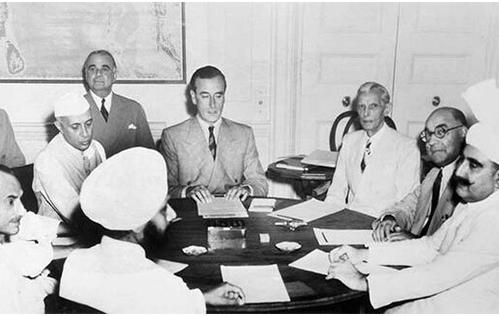
To promote the demand for independent nations for respective Hindu and Muslim states in south Asia, nationalists found an easy task to stir up the different religious groups toward nationalist ends. By the time India and Pakistan declared their independence from Britain on August 14, 1947, Hindu and Muslim nationalists were in a frenzy to enforce the borders of their new nations.
Although many people lived in the lands they defined as home for generations, the new partition of India and Pakistan on August 14, 1947, immediately made them foreigners in the lands they called home. A cycle of massacres, rape, and murder fueled and perpetuated the catastrophe causing a massive flight of Hindus from Pakistan and Muslims from India.
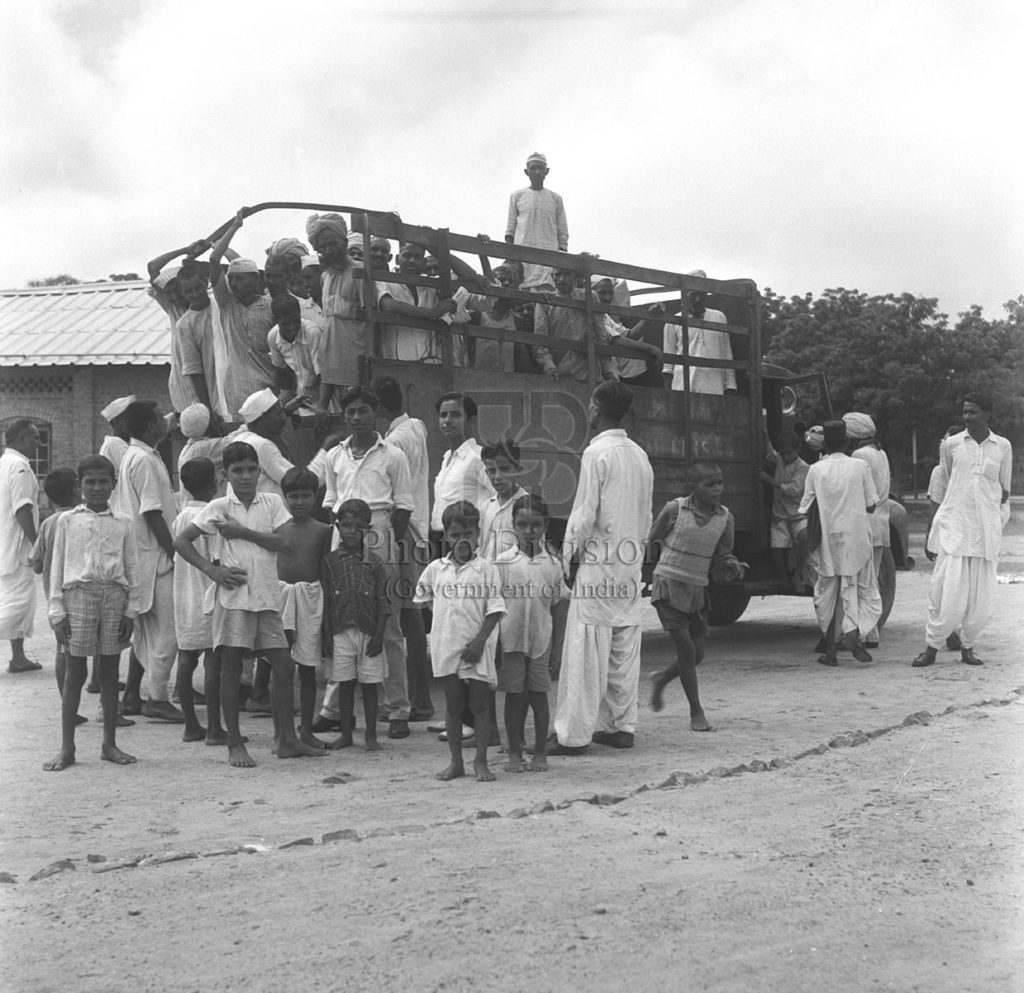
The violence of the Great Partition included atrocities committed by both sides. Hindus and Muslims each realized the danger of being a religious minority in the borderlands of India and Pakistan.
The Violence of the Great Partition
Although widely distributed throughout the borderlands, the heaviest reports of violence came from the region known as Punjab. In Punjab, there were no reports of Hindus escaping to India or Muslims escaping to Pakistan. Instead, massacres broke out in India and Pakistan against the resident minorities. Reports at the time of the Great Partition suggested 500,000 to 800,000 Muslims were killed in Punjab alone as they tried to enter Pakistan.
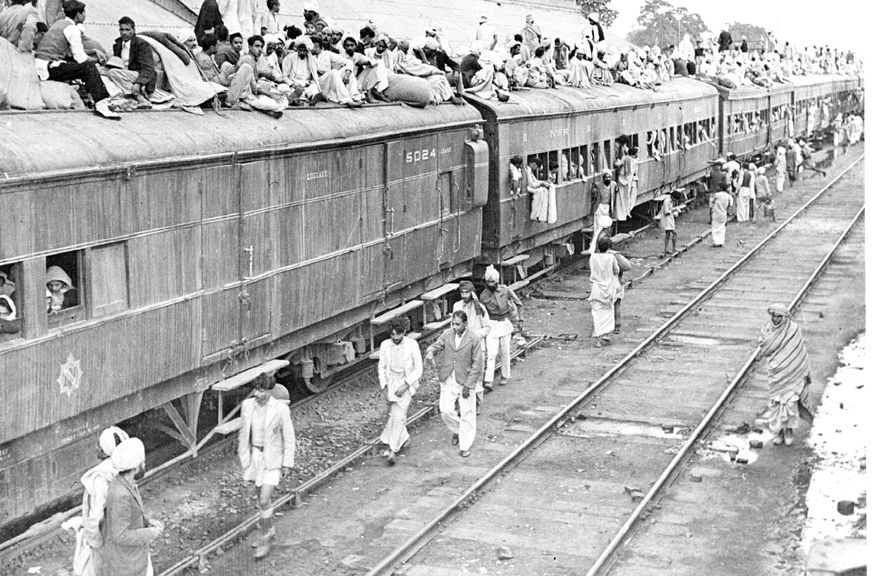
A refugee special train at Ambala Station. The carriages are full and the refugees seek room on top.
In the eastern part of the country, the Great Partition turned the populous province of Bengal into East Pakistan. Thousands of Hindu people in East Pakistan found themselves under attack from Muslim nationalists. Hundreds of thousands of Hindus fled their homes in East Pakistan to cross the new border into India. Muslims fleeing across the same border from India to East Pakistan occupied the homes of the Hindu refugees that had fled.
In Delhi, the same pattern repeated with the roles reversed. As many as 20,000 Muslims were slaughtered. By the end of the fighting, 330,000 Muslims fled Delhi and crossed the border into Pakistan, their homes now occupied by Hindu citizens of India. A Muslim refugee camp was established within Delhi that housed more than 20,000 who did not escape to Pakistan but lost their homes.
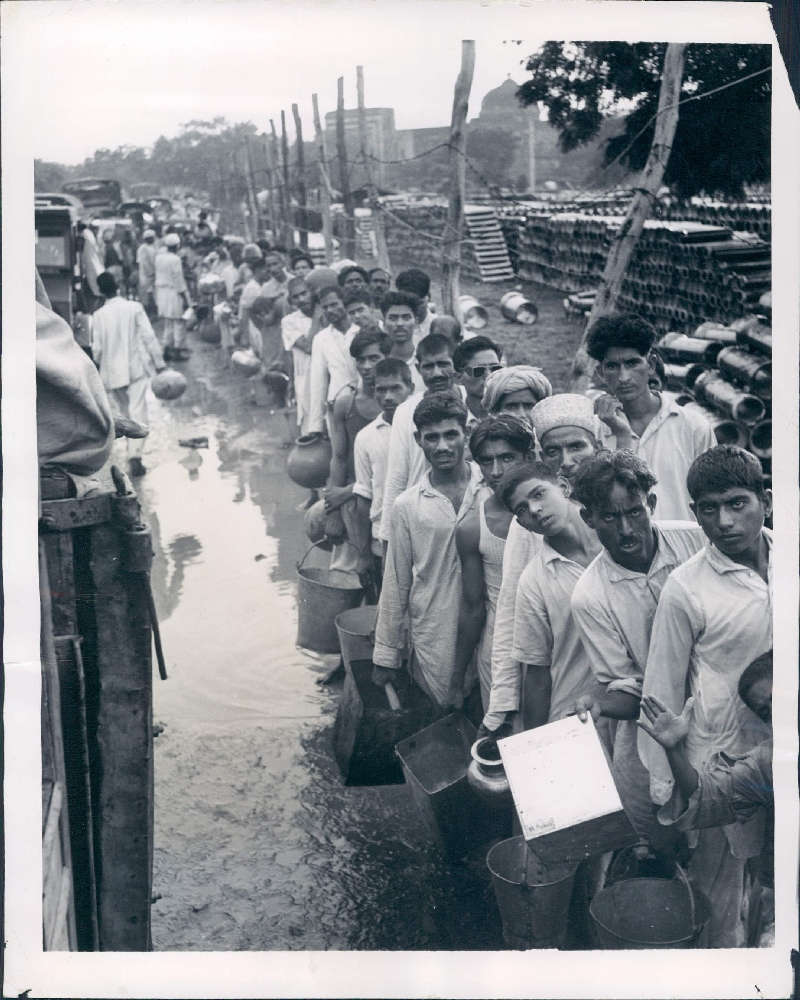
As reports of massacres spread across the subcontinent, the reports triggered counter massacres. Each massacre triggered another surge of refugees fleeing with their families and all their worldly possessions they could carry to cross the border where they hoped they could find safety.
As many as 75,000 women were raped in the violence, many killed or disfigured after being victimized.
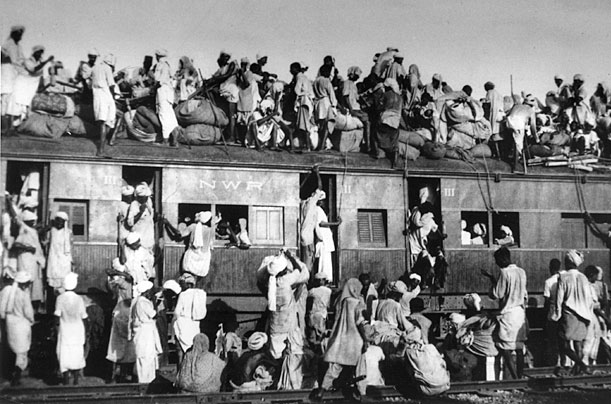
As the leaders of India flew back and forth across the new nation attempting to resolve the violence, lines of refugees moving in both directions to and from India’s borders with Pakistan stretched out as long as 50 miles. The railroad system was overwhelmed with passengers who sat within the travel cars and also on the roofs holding all their life’s possessions they could carry as they ran for their lives from the violence. In some instances, railway cars pulled into the stations filled with only dead bodies after being attacked along the way.
The Great Partition was one of the greatest mass migrations in history, and its violence was both unprecedented and unexpected. The nationalist violence in India and Pakistan continues to stir to this day occasionally.
